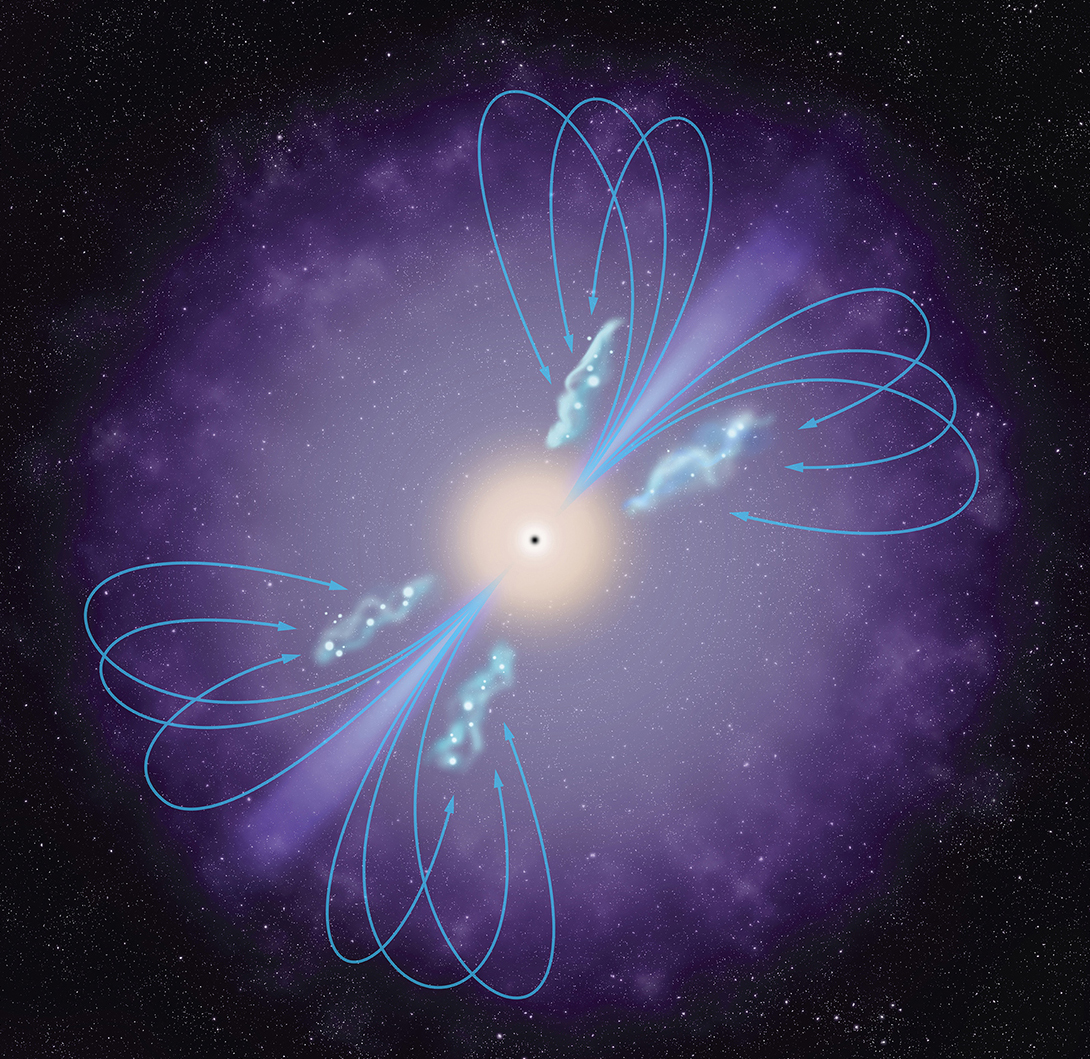
This artist's rendering shows a central black hole interacting with gas in the galaxy's halo to create a self-regulating cycle. In this cycle, jets shooting out of the galaxy's center heat a halo of surrounding gas, controlling the rate at which the gas cools and falls into the galaxy to form stars // Illustration by NASA, ESA, and P. Jeffries (STScI)
Discovering the mysteries of new stars
Two independent teams of researchers have illuminated the mystery of why the universe’s largest elliptical galaxies continue making stars at a slow rate long after their peak years of star birth. Astronomers Stefi Baum, dean of science, and Chris O’Dea, in the department of physics and astronomy at the University of Manitoba, were two key researchers on a team that studied an active region in the constellation Perseus. The teams of astronomers used NASA’s Hubble Space Telescope to resolve brilliant knots of hot, blue stars forming along the jets from active black holes in the centers of large elliptical galaxies.
This discovery explains the mystery of why many elliptical galaxies in the present-‐day universe are not ablaze with star birth. For many years, the question has persisted of why galaxies awash in gas don’t turn all of that gas into stars. Theoretical models of galaxy evolution predict that present-‐day galaxies more massive than the Milky Way should be bursting with star formation, but that is not the case. Now scientists understand this case of arrested development, where a cycle of heating and cooling keeps star birth in check. A light drizzle of cooling gas provides enough fuel for the central black hole’s jets to keep the rest of the galaxy’s gas hot.
“Think of the gas surrounding a galaxy as an atmosphere,” explains Megan Donahue of Michigan State University, leader of one research team. “That atmosphere can contain material in different states, just like our own atmosphere has gas, clouds, and rain. What we are seeing is a process like a thunderstorm. As the jets propel gas outward from the center of the galaxy, some of that gas cools and precipitates into cold clumps that fall back toward the galaxy’s center like raindrops.”
“The ‘raindrops’ eventually cool enough to become star-‐forming clouds of cold molecular gas, and the unique far ultraviolet capabilities of Hubble allowed us to directly observe these ‘showers’ of star formation.” explains Grant Tremblay of Yale University, leader of the second study and former doctoral student of Baum and O’Dea. “We know that these showers are linked to the jets because they’re found in filaments and tendrils that wrap around the jets or hug the edges of giant bubbles that the jets have inflated,” said Tremblay, “and they end up making a swirling ‘puddle’ of star-‐forming gas around the central black hole.
But what should be a monsoon of raining gas is reduced to a mere drizzle by the black hole. Even though the jets cause some outwardly flowing gas to cool, their main effect is to heat the rest of the gas around a galaxy, which prevents the whole atmosphere from cooling more quickly. The entire cycle is a self-‐regulating, feedback mechanism, like the thermostat on a house’s heating and cooling system.






